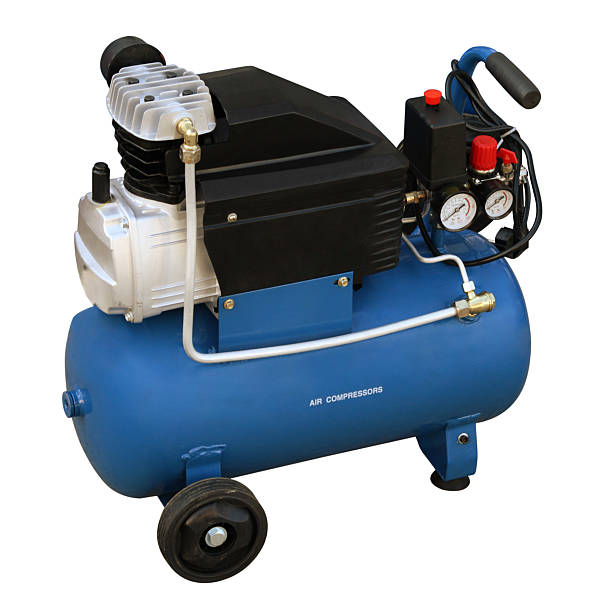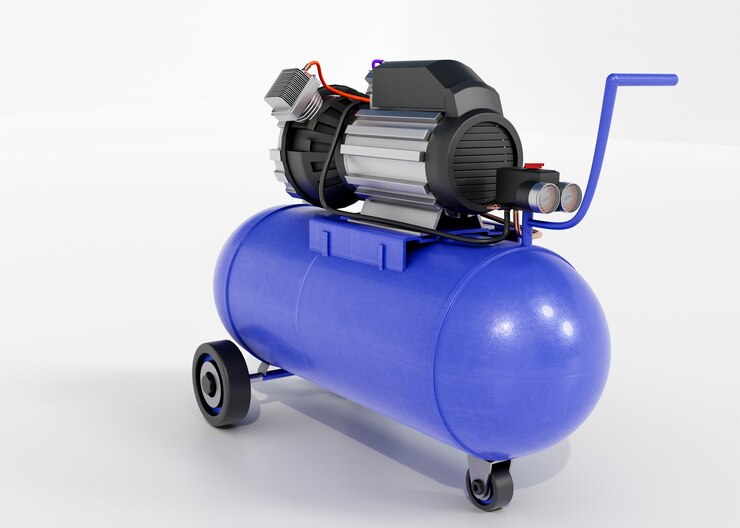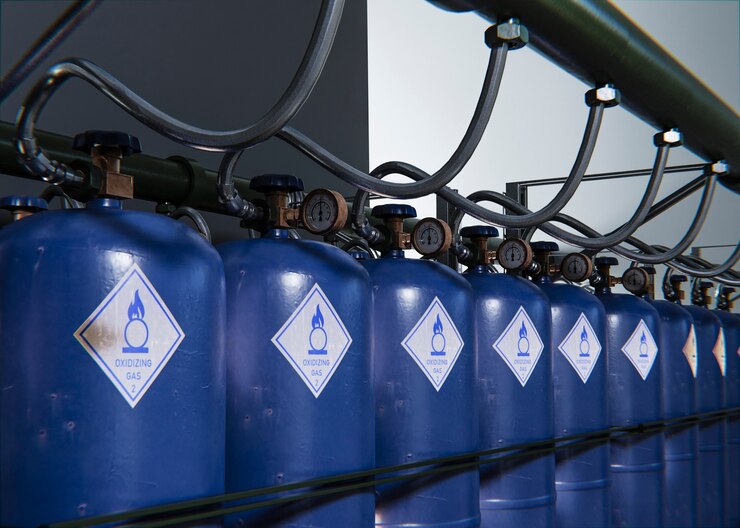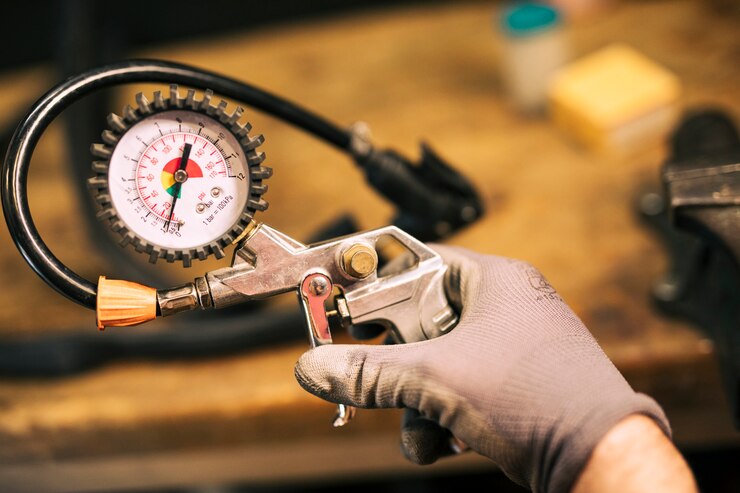Understanding Diaphragm Compressor: Work & Applications
The Ins and Outs of Diaphragm Compressor: A Comprehensive Guide
Positive displacement compressors using diaphragms, sometimes referred to as diaphragm compressor, are a dependable and adaptable kind of compressor. They are an invaluable tool in a variety of sectors since they have clear benefits over conventional piston compressors. This thorough book dives into the realm of diaphragm compressors, examining their functions, advantages, and selection criteria.
Understanding Diaphragm Compressors:
A diaphragm compressor flexible membrane serves as the piston at its core. This membrane reciprocates back and forth inside a sealed container under the power of a crank mechanism. The chamber volume rises as the diaphragm descends, allowing gas to enter through an intake valve. On the other hand, when the diaphragm moves higher, the chamber volume lowers, compressing the gas and pushing it out of an output valve.
By doing away with the necessity for lubrication inside the compression chamber, this oil-free design keeps the processed gas clean. Because of its reputation for clean operation, diaphragm compressors are perfect for applications requiring clean air or delicate materials.
Working Principles: A Deeper Look:
A reciprocating diaphragm and several valves form the basis of the straightforward yet efficient concept that drives these compressors. A closer examination of the crucial phases in a single compression cycle is provided below:
- Intake Stroke (Suction):
By forcing the flexible diaphragm lower, the crank mechanism increases the sealed chamber’s capacity. This causes a region of low pressure to form inside the chamber. Consequently, the inlet valve is forced to open due to the pressure differential between the chamber and its surroundings. As the expanding chamber is filled with fresh gas, the pressure differential is satisfied.
- Recognize in Compression Stroke:
The diaphragm is forced higher as the crank rotates more. In doing so, the chamber capacity decreases and the trapped gas within is compressed. Because of the constant gas amount and decreasing volume, the pressure within the chamber builds gradually.
- Discharge Stroke (Delivery):
The exit valve is pushed open when the pressure inside the chamber surpasses the discharge pressure set by a predefined amount. Through the open outlet valve, the compressed gas exits the chamber at a pressure greater than that of the surrounding air.
- Cycle Completion:
The compressed gas is released and the chamber volume is reduced when the diaphragm reaches its highest position. After that, the crank mechanism turns around, putting the diaphragm back in its initial position. Because the pressure within the chamber is higher than the outside air, the inlet valve closes. When the pressure within the chamber drops below the discharge pressure level, the exit valve likewise closes. This concludes a whole cycle, and the procedure is then repeated endlessly.
Key Points:
Within the chamber, there are alternating zones of high and low pressure due to the diaphragm’s reciprocating action.
- The gas flow via the inlet and outflow valves is controlled by the pressure differential between the chamber and its surroundings.
- The point at which compressed gas is released from the chamber depends on the preset discharge pressure level.
- As long as the compressor is functioning, this cycle will continue to produce compressed gas at the appropriate pressure continuously.
- Check out our website for a comprehensive explanation of positive displacement compressors.
Applications of Diaphragm Compressors: A Breath of Fresh Air Across Industries:
Diaphragm compressor have made a name for themselves in several sectors thanks to their silent operation, adaptability, and oil-free functioning. Here is a sample of a few of their well-known uses:
- Diaphragm compressors for handling corrosive chemicals:
When handling caustic or delicate chemicals, the oil-free design is revolutionary. In chemical facilities, they are utilized for jobs including gas sampling, purging reaction containers, and moving hazardous substances.
- Food and Beverage:
In the preparation of food and beverages, it is essential to maintain a sterile and clean atmosphere. Safely moving food items such as grains, powders, and even breakables like potato chips is possible using pneumatic conveying. Keeping food items clean by supplying clean air for bottling and packing operations. They ensure accurate air pressure regulation for seamless bottling apparatus operation.
- Pharmaceutical and Medical Sectors:
They provide medicine for inhalation treatment in the form of a fine mist. During medical operations, they remove mucus or fluids. Increasing the amount of oxygen breathed air to help breathing. These compressors are essential for protecting the environment because they assisting in the elimination of contaminants from industrial facilities’ exhaust streams. Biological treatment is aided by the airing and stirring of wastewater. They supply pure air for sample collection in instruments for measuring the quality of the air and water.
- Printing Industry:
Printing requires precise air management. It prevents print flaws by keeping an atmosphere free of dust. It ensures steady air pressure for precise ink flow and the best possible print quality.
These are only a few instances; because of their special qualities, diaphragm compressor is used in several different industries. They are an incredibly useful tool for a variety of sectors due to their capacity to handle a wide range of gases, from corrosive chemicals to sterile air.

Breathe Easy with the Benefits of Diaphragm Compressor:
These compressors are a popular option in many applications because they provide a strong set of benefits. Here is a deeper look at a few of the main advantages that make them unique:
- Clean Operation:
There is no chance of oil contamination in the processed gas since there is no oil in the compression chamber. This is especially important in sectors where preserving product purity is critical, such as chemical processing, food & beverage, and pharmaceutical.
- Low Maintenance:
Because these compressors have fewer moving parts and a simpler design, they require less maintenance. Compared to other compressors, which need frequent oil changes and component replacements, this equates to fewer maintenance requirements.
- Silent Operation:
Compared to other compressors, diaphragm compressors often run much quieter. Because of this, they’re perfect for use in noise-sensitive settings including homes, offices, and hospitals.
- Durability:
These compressors have a longer lifespan because of their sturdy structure and small number of moving components. They can endure prolonged use with little downtime, guaranteeing dependable performance in the long run.
The Versatility of compressor:
A variety of gases, including the following, can be handled by these compressors:
- Corrosive gases:
Because they don’t corrode easily, they are perfect for use in chemical processing applications.
- Flammable gases:
They can handle flammable gases like hydrogen or natural gas because of their oil-free construction, which reduces the chance of ignition.
- Sterile gases:
The clean operation guarantees that these gases are suitable for use in pharmaceutical and medical applications.
- Energy Efficiency:
Because of its simpler design and lower friction than piston compressors, diaphragm compressors may be more energy-efficient than piston compressors in some applications; however, this might vary according to the particular type.
- Self-priming Capability:
These compressors, in contrast to some piston compressors, can prime themselves, obviating the requirement for extra priming steps before operation.
Selecting the Perfect Diaphragm Compressor: A Match Made in Air:
It’s important to carefully analyze your unique demands when searching for the best diaphragm compressor. The following are some essential elements to help you choose:
- Requirements for Flow Rate:
Find out how much gas your application requires, expressed in cubic feet per minute, or CFM. Select a compressor that has a higher flow rate than what you require to guarantee enough capacity.
- Pressure Requirements:
Determine the required discharge pressure (measured in PSI, or pounds per square inch) for your application. Choose a compressor that can reach and sustain this amount of pressure with ease.
- Gas Type:
Think about the kind of gas you’ll be working with. Make sure that the materials used in the compressor are appropriate for the characteristics of the gas, such as its flammability or corrosiveness.
- Duty Cycle:
Determine the frequency at which the compressor will run. Select a model whose duty cycle corresponds to your usage style (continuous use, for example).
- Environmental Conditions:
Take into account the temperature, humidity, and dust or other pollutants present in the working environment. Choose a compressor that can operate efficiently in those circumstances.
- Maintenance needs:
Assess models that are easy to maintain and have replacement parts readily available.
- Noise level:
If noise is an issue, give preference to models with lower decibel levels.
- Portability:
If mobility is a priority, take into consideration small and lightweight models.
You may select a compressor that precisely meets the needs of your application by carefully weighing these variables, guaranteeing peak performance and a dependable compressed air supply.
Conclusion:
You only need to look at the LEIYAO Compressor! Being a top provider of diaphragm compressor, we provide a wide range to satisfy your unique needs. We guarantee that you will receive the ideal solution for your compressed air requirements because of our dedication to quality, performance, and outstanding customer service. Experience the difference that a compressor can make by getting in touch with our website right now!


